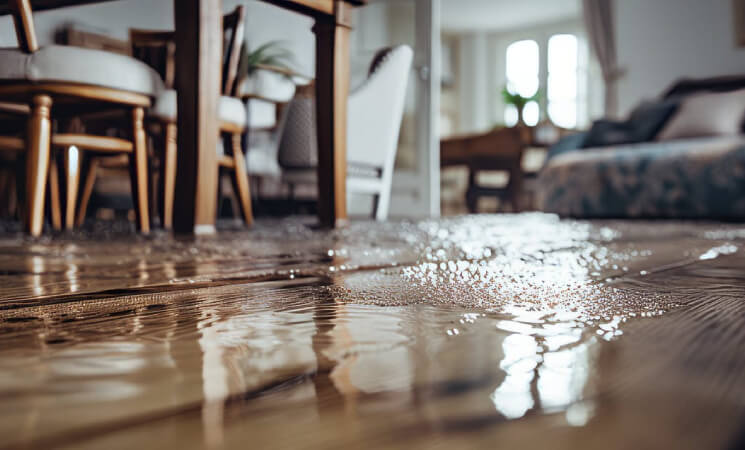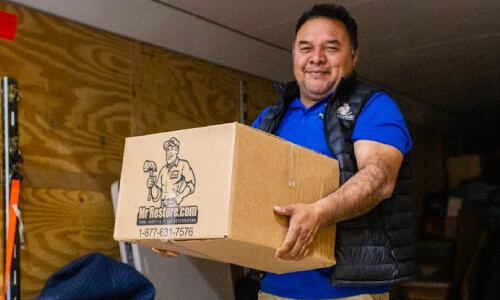Storms are forces of nature that mankind still hasn’t found ways to tackle. We can predict when they’re coming, where they’re coming from, and their wind speeds, but we can never tell when they increase in magnitude and what damage they could do to the local town and population. The best we can do is salvage what we can after the storm damage in Arlington, TX.
After Harvey hit Texas as a powerful Category 4 hurricane back in April 2017, it only served to reassert that nature is very unpredictable. Three things were most noticeable after the storm hit Texas:
- It was 12 years before a hurricane of that magnitude hit the United States, meaning most residents were likely not prepared for it.
- A hurricane never hit Texas in 9 years before Harvey.
- There were 24 inches of rainfall for three consecutive days, which resulted in flooding, seeping, and other water problems.
Unexpected tornadoes cause catastrophic damage to property and sometimes come with flooding, which only serves to make things worse. After all the storm damage in Arlington, TX, has been done, it falls on your insurance carrier to compensate you for the damage, government relief programs to provide homeowners with some respite, and water restoration services to repair the damage that has been done.
Warning signs of a tornado:
Storms are a regular feature across the United States, but there are many precursors to them before one finally hits an unfortunate locale. Many people who are unprepared or caught unaware end up getting killed or severely injured. Although the probability that a storm will hit you is small, it is important to follow a few guidelines.
The most obvious strategy would be to alert yourself after the onset of severe whether, which takes place before a storm. Remember that injuries and deaths occur because people are unaware and informed. This puts young children, the elderly, the sick, and invalids at high risk because they might not be able to get help in time. It is also important to never become overconfident in the sight of danger because no one can anticipate storm damage in Arlington, TX.
Seek shelter if you see the following conditions:
- If the clouds become greenish-black in colors
- Falling hail is a dangerous sign and can be lethal in the absence of an approaching tornado.
- If there is a ‘deafening’ silence after a thunderstorm, it’s a sign that things are about to get more destructive.
- If the clouds are moving at a fast speed, especially when they are moving in a vortex or appear to be meeting at one point in the sky.
- If you hear the sound of rushing air that soon turns into a loud roar, it’s a sign of a powerful storm approaching. The loud ‘road’ can be likened to an explosion which can definitely damage the ear.
- If you see items falling off from the sky, perhaps papers or even stationery items, they were probably picked up by an incoming storm and hurled across your home.
- If you see a funnel-shaped cloud that is rotating, it is definitely a storm. These clouds contain sticks, branches, and other objects, which can be very harmful once they fall down.
It is incredibly important to rush toward the shelter once all the signs (or some of the signs) have manifested themselves. After the storm has done its damage, the best that you can do is perform restorative services to repair as much damage as possible. Take pictures of damaged items and perform a complete inventory in case your insurance adjuster arrives.
We recommend getting in touch with a specialist who knows the ins and outs of storm damage in Arlington, TX.
What you can expect from Mr. Restore
Our storm restoration service is composed of professionals who have years of experience under their belt. Whether you’re a homeowner, small and medium-sized business owner, or a large corporate entity, we have the tools and expertise to help you deal with the worst of storm damage in Arlington, TX. Our trained experts will come to your house and perform a thorough examination of the interior and exterior areas of the building. This will help them get a ‘feel’ for the damage that has been done.
Once they have assessed the level of damage, they will start discussing renovation plans with you. Our team also knows the ins and outs of the local insurance carrier in your area, which means we will be able to help you get the best compensation plans.
Once our technicians have agreed with the homeowners about the best course of action, we will determine the type of equipment that our professionals will need to perform the necessary repairs. Sometimes the damage necessitates the use of pumps and vacuums to remove water from hard-to-reach areas of the house.
Depending on the saturation levels of water vapor in the air, our team might feel the need to bring in generators to dehumidify the air so that we minimize the chances of mold growing in wet areas of the house. No one wants mold to make things worse than they already are.
Our specialists will then thoroughly clean your house and disinfect surfaces that have been contaminated by water. It is important to remember that water from storms and flooding contains dangerous chemicals and microbes which can cause illnesses. In the case of odors, our technicians utilize specially designed deodorants to diffuse them out of the house.
It is important, however, to get help immediately once the storm has hit your house . Storm damage in Arlington, TX, can be minimized depending on how soon a professional service has been hired to do their job. If your house has been affected by a local storm and you are looking for the best restorative services, contact our representatives at Mr. Restore today!
Given the number of storms and hurricanes that have hit the United States, it can be safely assumed that storm damage in Arlington, TX, will continue to impact many lives over the course of a few months, so keep your guard up and always keep the number of a restorative company nearby.






